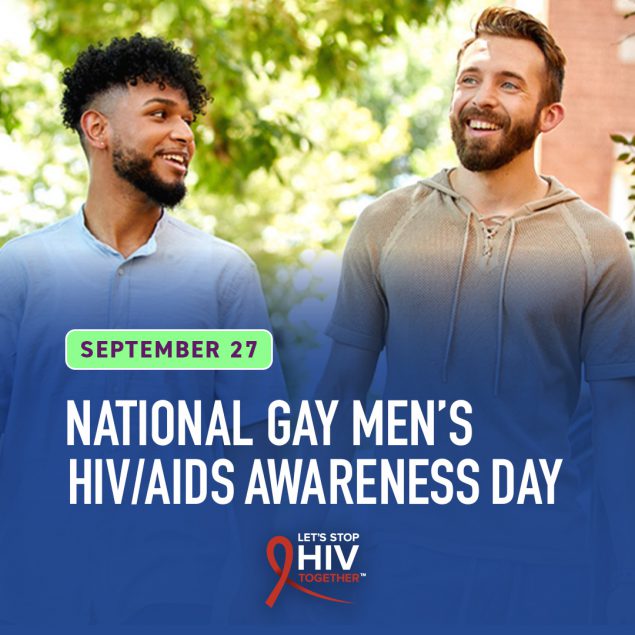September 27, 2023 – Today, CHIPTS honors National Gay Men’s HIV/AIDS Awareness Day (NGMHAAD), a day dedicated to recognizing the disproportionate impact of the HIV epidemic on gay men and promoting HIV prevention and treatment services that allow gay men to live long, healthy lives. Learn more about NGMHAAD below.
Gay and bisexual men accounted for 67 percent of new HIV diagnoses in the United States and dependent areas in 2021, according to the Centers for Disease Control and Prevention (CDC). Within this population, disparities persist among Black/African American and Hispanic/Latino gay and bisexual young men, who receive more new HIV diagnoses than other groups. In 2019, CDC reported that 26% of new HIV infections were among Black gay and bisexual men, 23% among Latino gay and bisexual men, and 45% among gay and bisexual men under the age of 35.
Several CHIPTS faculty have worked to examine contextual factors driving HIV infections and ways to improve HIV outcomes for gay, bisexual, and other men who have sex with men (MSM). Last year, CHIPTS Combination Prevention Core Affiliate Dr. Michael Li shared an illuminating reflection highlighting factors that are linked to increased risk of acquiring HIV, reduced access to preventive services such as PrEP, and reduced access to HIV care and antiretroviral therapy among this population, such as being unstably housed, using psychostimulants (e.g. methamphetamine), and developing mental health issues that derive from stigma and discrimination. Dr. Li discussed the significant role of intersectionality in HIV prevention and healthcare engagement, describing how race, ethnicity, age, disability, and/or class inform gay men’s preventive and care needs. His call to action aligned with the goals of National Gay Men’s HIV/AIDS Awareness Day, encouraging HIV researchers and service providers to adopt an intersectional lens and collaborate with the gay community to address HIV.
Recent publications on this topic from CHIPTS faculty include:
- “That’s kind of like the big struggle right now is can we get PrEP?”: Facilitators and Barriers to PrEP Uptake Among Active Duty Gay and Bisexual Men – Beltran, R. M., Schuyler, A. C., Blair, C. S., Goldbach, J. T., Castro, C. A., & Holloway, I. W. (2023).
- The US Military is experiencing a rise in HIV infections among gay and bisexual men (GBM) serving on active duty, yet little is known about this population’s uptake of pre-exposure prophylaxis (PrEP), an evidence-based intervention for HIV prevention.
- The Use of Daily and On-Demand Oral Pre-Exposure Prophylaxis Dosing Strategies Among Young Adult Gay, Bisexual and Other Men who have Sex with Men Enrolled in an mHealth Adherence Intervention – Horvath, K. J., Ma, J., Storholm, E. D., Black, A., Klaphake, J., & Baker, J. V. (2023)
- Pre-exposure prophylaxis (PrEP) is a highly effective HIV prevention option for gay, bisexual and other men who have sex with men (GBMSM). However, with newer PrEP options, a greater understanding of whether and why GBMSM switch dosing strategies is needed to inform clinical practice and research.
- Beyond HIV prevention: Additional individual and community-level benefits of PrEP among Latino gay and bisexual men – Brooks, R. A., Nieto, O., Santillan, M., Jr, Landrian, A., Fehrenbacher, A. E., & Cabral, A. (2022).
- HIV infections disproportionately impact Latino gay and bisexual men (GBM) in the United States. Pre-Exposure Prophylaxis (PrEP) is a proven prevention strategy that can help reduce new HIV infections in this population.
Check out these HIVinfo resources to learn more:
- HIV and Gay and Bisexual Men(Fact sheet)
- Lesbian, Gay, Bisexual, and Transgender (LGBTQ+)(HIV Source)
- The Basics of HIV Prevention(Fact sheet)
- Pre-Exposure Prophylaxis (PrEP)(Fact sheet)
- PrEP vs. PEP(Infographic)

